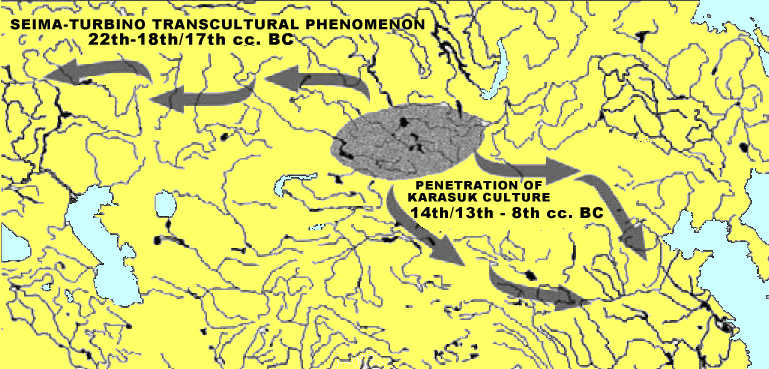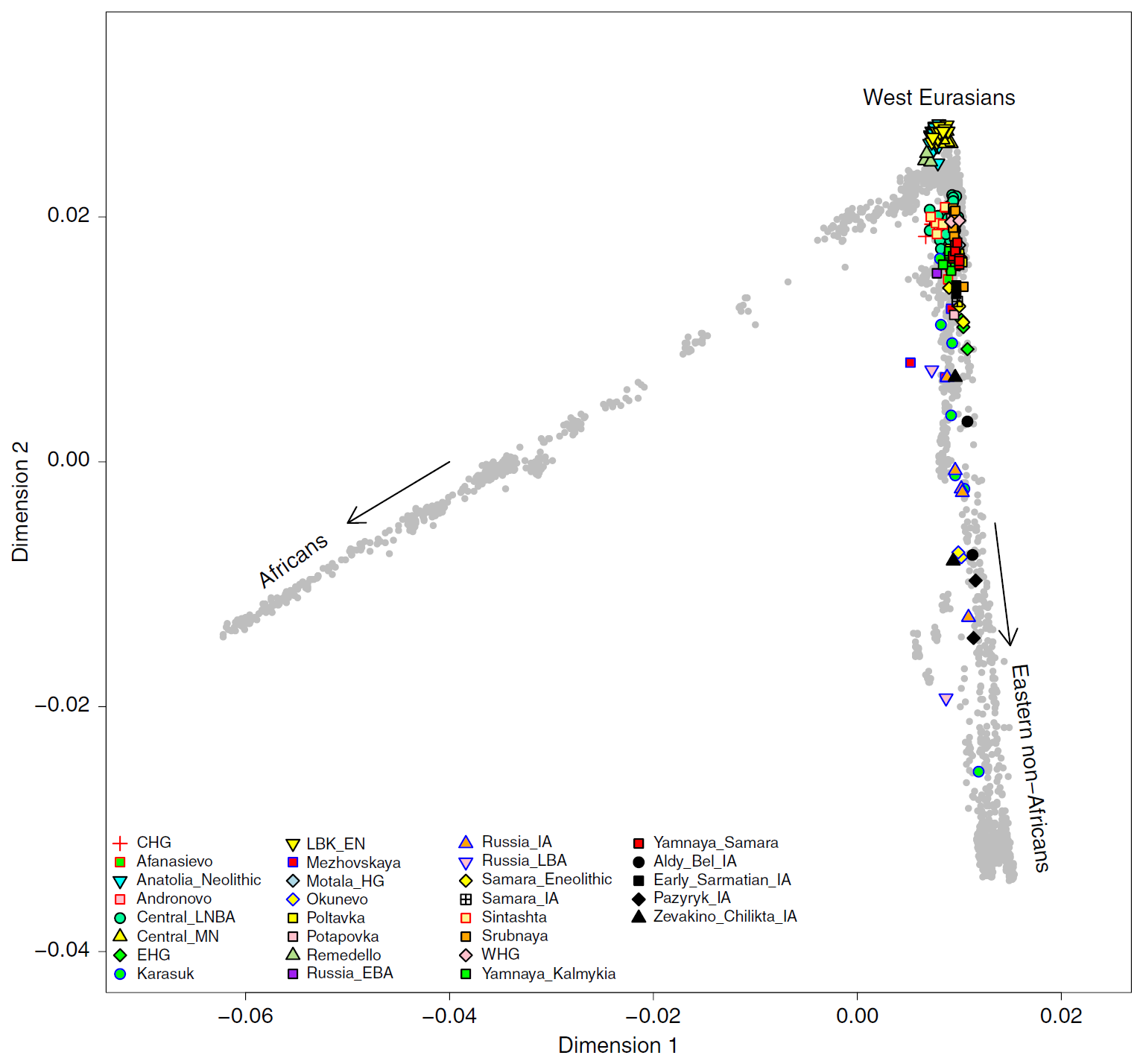My values with FTDNA raw data
ANCIENT FARMERS73.1%
- WEST EUROPEAN FARMERS (4000-5000 years)31.6%
- LEVANT (4000-8000 years)5.6%
- NEOLITHIC-CHALCOLITHIC IRAN-CHG (5000-12000 years)9.4%
EAST EUROPEAN FARMERS (5000-8000 years)26.5%
STEPPE CULTURES25.6%
- KARASUK-E SCYTHIAN (2000-3000 years)5.3%
- ANDRONOVO-SRUBNAYA (3000-4000 years)10.1%
YAMNAYA-AFANASIEVO-POLTAVKA (4000-5000 years)10.2%
AFRICAN1.3%
- EAST AFRICAN (modern)1.3%
WEST AFRICAN (modern)0.0%
- WESTERN EUROPEAN & SCANDINAVIAN HUNTER GATHERERS (4000-5000 years)0.0%
- EASTERN NON AFRICANS (modern)0.0%
- SOUTHEAST EURASIAN0.0%
My values with 23 andme raw data
ANCIENT FARMERS70.4%
- WEST EUROPEAN FARMERS (4000-5000 years)26.6%
- LEVANT (4000-8000 years)5.2%
- NEOLITHIC-CHALCOLITHIC IRAN-CHG (5000-12000 years)10.5%
EAST EUROPEAN FARMERS (5000-8000 years)28.0%
STEPPE CULTURES27.4%
- KARASUK-E SCYTHIAN (2000-3000 years)4.3%
- ANDRONOVO-SRUBNAYA (3000-4000 years)13.3%
YAMNAYA-AFANASIEVO-POLTAVKA (4000-5000 years)9.8%
AFRICAN2.2%
- EAST AFRICAN (modern)2.2%
WEST AFRICAN (modern)0.0%
- EASTERN NON AFRICANS (modern)0.0%
- SOUTHEAST EURASIAN0.0%
- WESTERN EUROPEAN & SCANDINAVIAN HUNTER GATHERERS (4000-5000 years)0.0%





